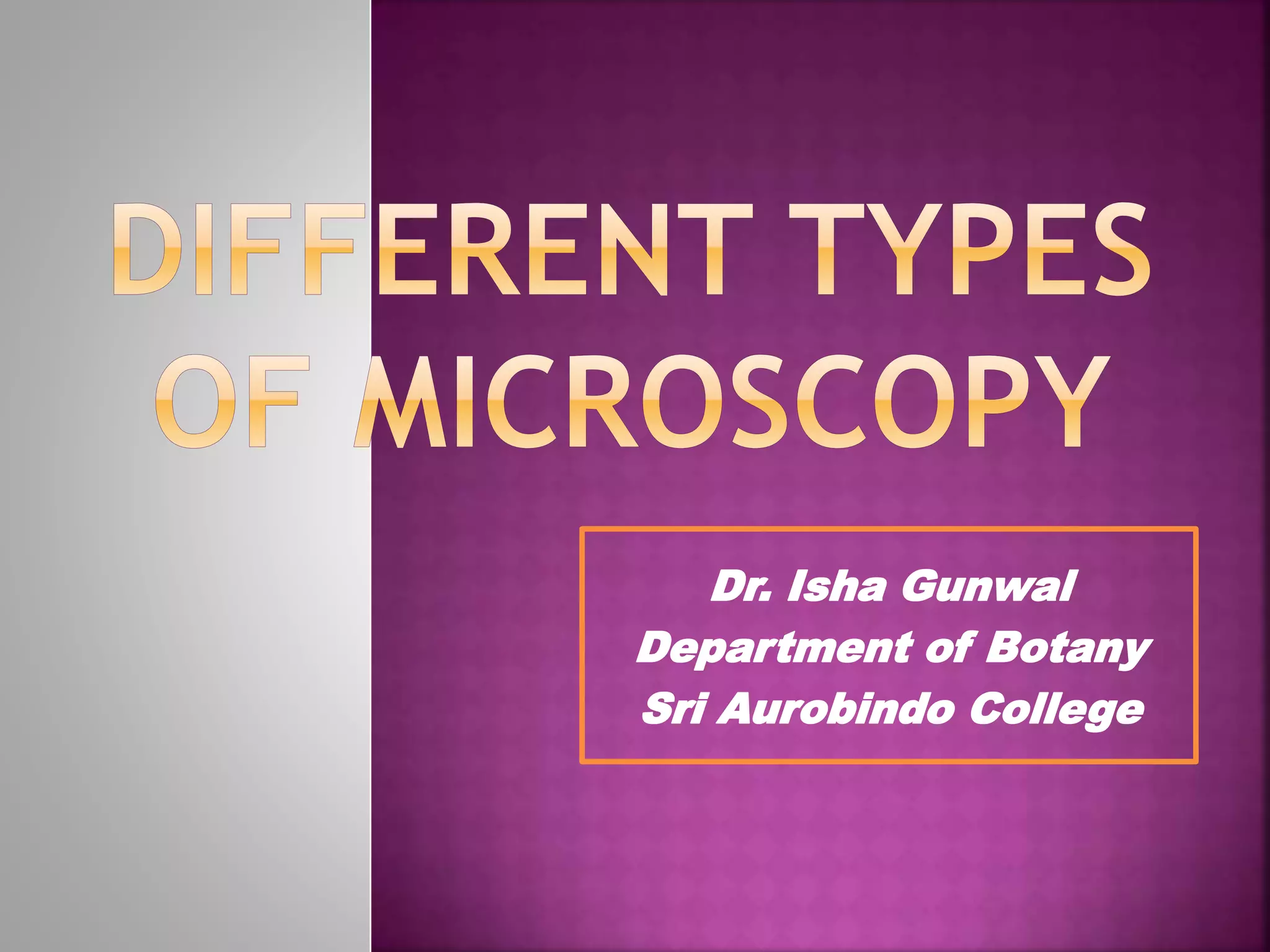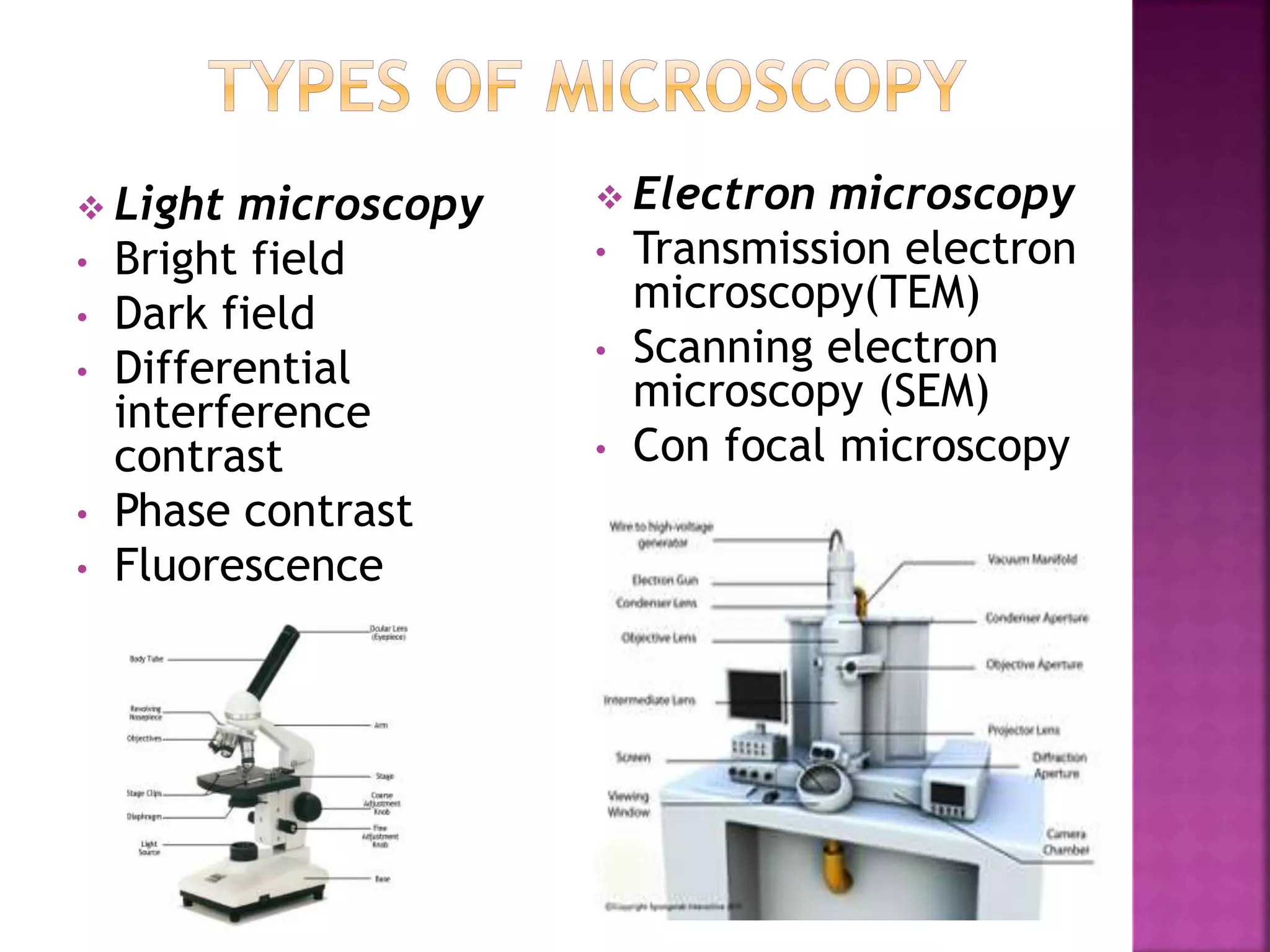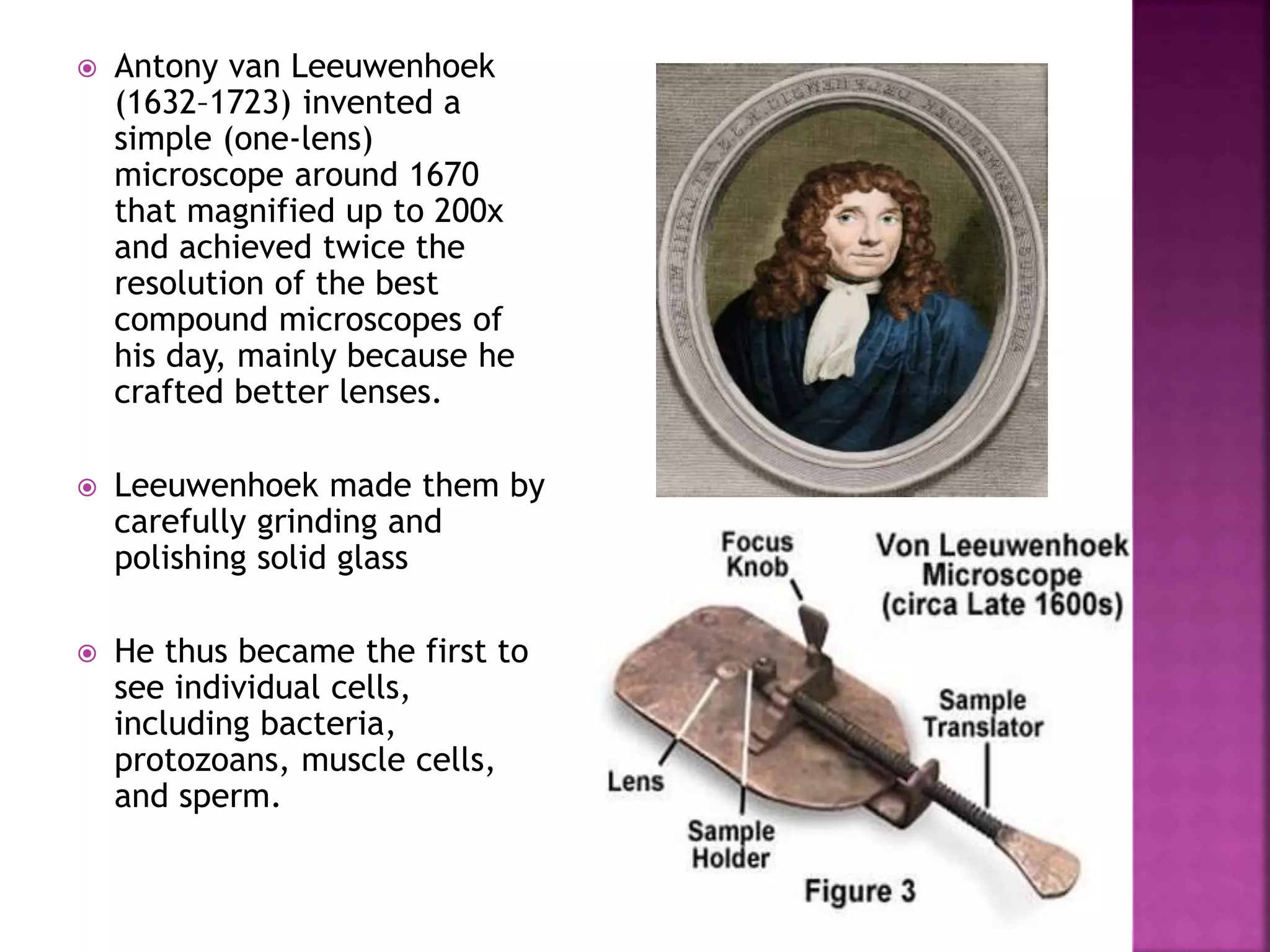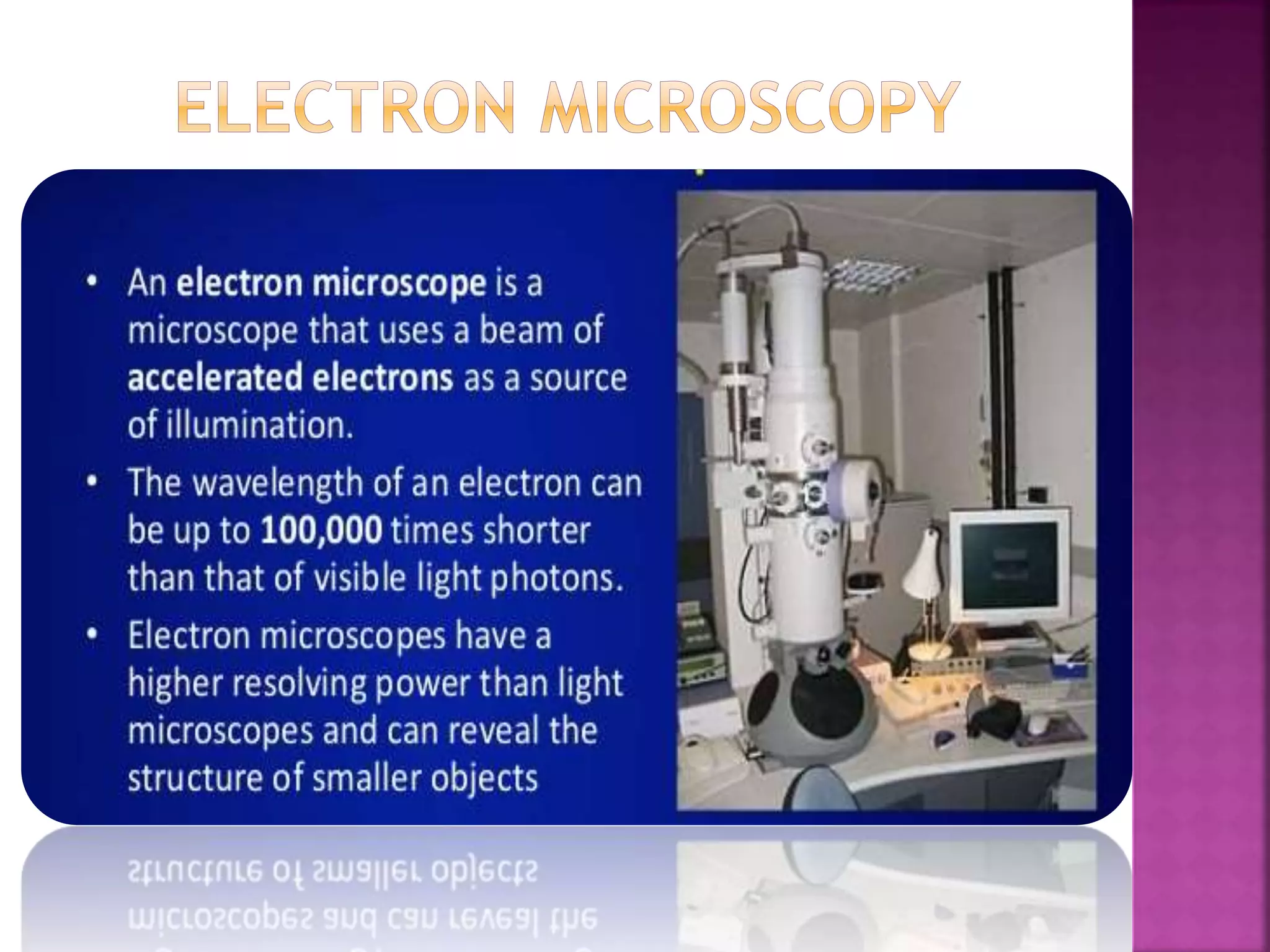The document provides an in-depth overview of microscopy, detailing various types, including light and electron microscopes, as well as methods such as fluorescence and differential interference contrast. It discusses the historical development of microscopes, key inventors, and the mechanics of how different microscope components function. Additionally, it explains techniques used to prepare specimens for observation and the principles behind various microscopy techniques, emphasizing their applications in biological and materials sciences.

























































